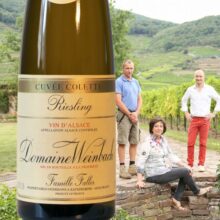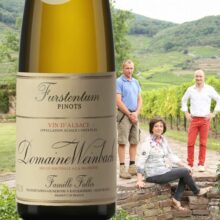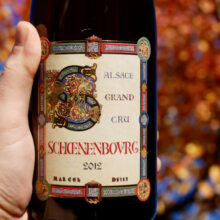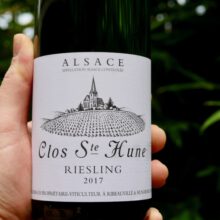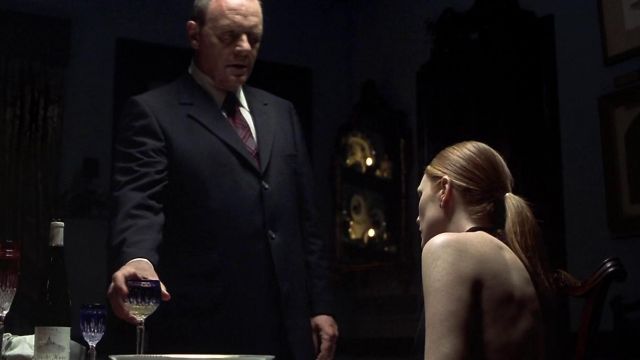
France
Alsace
The region lies between latitudes 47.5 degrees and 49 degrees north of the equator, giving a long, cool growing season. It is important for the vineyards to make the most of the sun’s rays, which is why most of the best vineyards are on south, south west, or south east facing slopes, sheltered from the wind by the Vosges.
Despite its germanic heritage, the traditional winemaking philosophy in Alsace is to ferment all of the grape sugar into alcohol, resulting in dry, full-bodied wines. However, wines with residual sugar are produced in particularly vintages – this includes the production of late-picked vendanges tardives and sélection de grains nobles.
Most Common Varieties
At the beginning of the 20th century, the many varieties planted in Alsace were divided into ‘noble’ and others. Of these, Riesling, Gewurztraminer, Pinot Gris and Muscat are considered noble, however varieties such as pinot blanc, chasselas and sylvaner are also considered as major grapes.
Riesling is the most respected grape variety in Alsace, and quite rightly. Alsace Riesling is steely, sometimes tough in youth, and perhaps a little austere for newcomers. It handsomely repays ageing in bottle.
Climate change has also seen an increase in Pinot Noir grown in Alsace. It was once notably light but in an increasingly warm climate its colour is darkening and it is taking on more weight.
Despite this tradition focus on the 8 major varieites, there is a push among the current generation of winemakers to revive obscure, once-derided native varieites and clones that have almost been rendered extinct clonal selection. Marcel Deiss is a strong advocate working to reestablish these varieties as robust resource for clonal material, a project well-illustrated by his complantation cuvées. Given the personality of his wines this can only be a good thing!
Understanding Alsace Labels
The following terms may be applied only to wines made from one of the four noble varieties.
Grand Cru was recognised as an AOC in 1975, and expanded in 1983, 1992 and 2007 to grant more than 50 individual vineyards granted superior status. The words Grand Cru are no guarantee of quality as some producers have seen Grand Cru simply as an excuse to charge more rather than as an opportunity to make seriously fine wine – although admittedly the maximum permitted yields are lower than the Alsace norm. Many of Alsace’s best wines are Grands Crus, however. A few top producers such as Trimbach and Hugel have Grand Cru sites but don’t refer to them on the label.
Vendange Tardive (VT) translates directly as Late Harvest, which is indeed what these wines are. Certain minimum ripeness levels have to be met (the best producers generously exceed them) and the grapes may be picked only when official authorisation is given. The trouble with Vendange Tardive wines is that they can vary from almost dry (but quite concentrated) to really quite sweet, yet no hint of sweetness level is given on most labels. The best of these wines can be aged for many years.
Sélection de Grains Nobles (SGN) signifies a wine made from even riper grapes, often at least partly concentrated by botrytis. These relative rarities are easiest to make in the region’s sunniest years, from the obliging Gewürztraminer grape. Their sweetness level can also vary quite considerably, although individual producers will generally ensure that their SGNs are definitely sweeter than their VTs.
